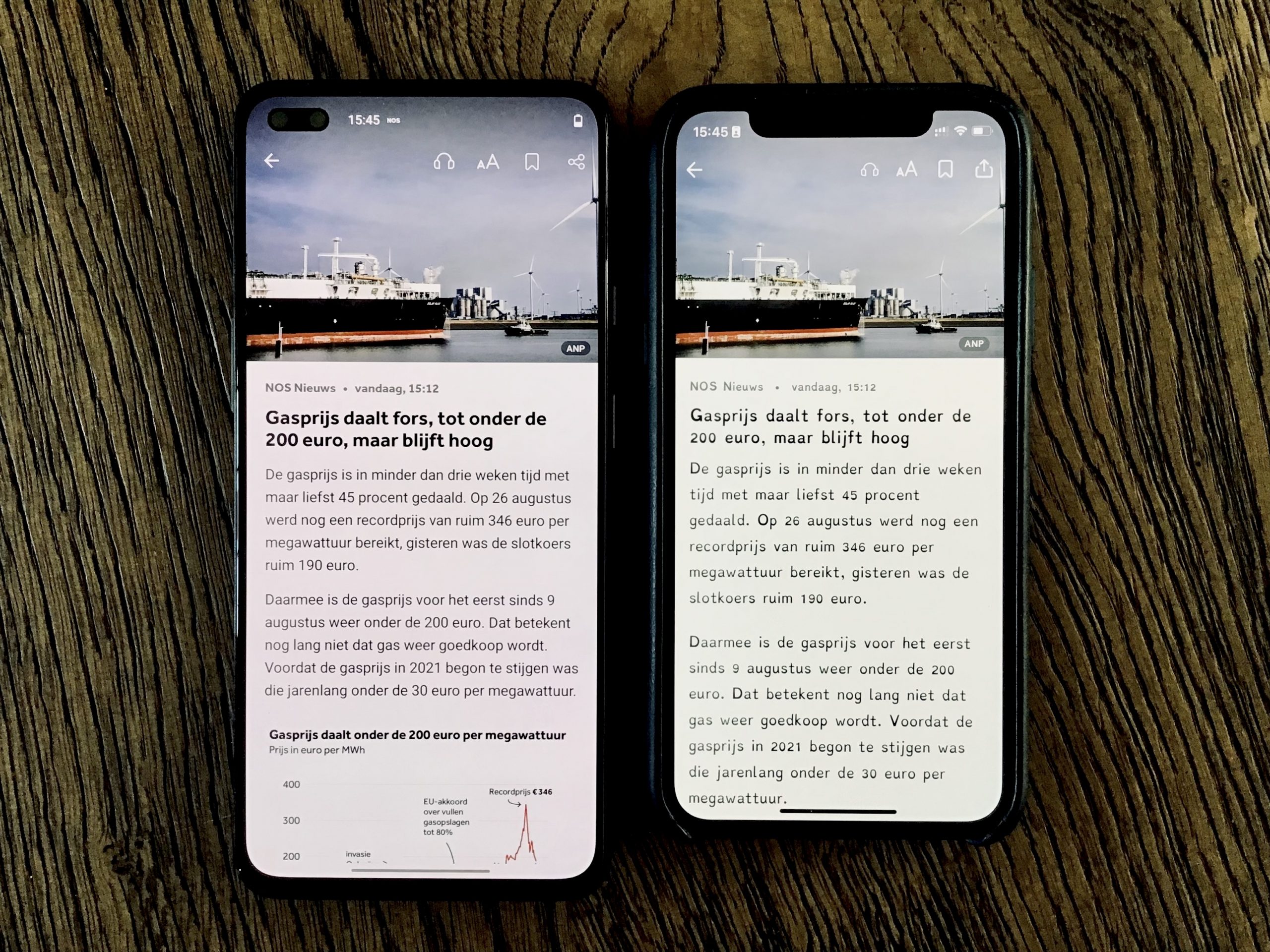PSM INNOVATIONS
Dutch public broadcaster app made more accessible for people with dyslexia
10 October 2022
The public media organisation has applied a new font style in its digital app which will make it easier to read for those with dyslexia.

Around 1 in 20 people in the Netherlands have dyslexia. This amounts to about 900,000 individuals that find it difficult to distinguish between letters, words, and sentences when reading, which can also make it more challenging to write or spell.
“This is a big enough group to justify a specific investment”, said Daniël Kegel, Head of Digital at NOS, (Nederlandse Omroep Stichting), an organisation within the Dutch public media system responsible for the coverage of news, sports and special events.
Recognising the scale of this problem, NOS recently introduced a small change to its mobile and tablet app that it claims would make it more “readable” for people with dyslexia to use.
The app now offers a font for dyslexic users, which contains thicker letters that are shaped differently so they are separated more clearly. Capital letters and full stops are also thicker, which enables readers to better distinguish between new sentences. Users can access this by selecting the ‘Optimize for dyslexia’ button on either the ‘aA’ symbol at the top of the article, or in the settings menu at the bottom of the homepage.
The idea developed soon after NOS showed the experiment to people with dyslexia at a hackathon event that it hosted earlier this year. “We showed the results to some people with dyslexia and they were so enthusiastic that we felt that we had to get this to production,” Mr. Kegel explained.
While the offer has only been live for a few weeks, NOS’ Digital Media department has received some positive reviews from users. According to Mr. Kegel, while “there is no definitive scientific research that proves that this works… we’ve heard from numerous dyslexics who have experienced a huge improvement in readability.” He also noted that while some people with dyslexia have also reported that it has not made a difference for them, “the majority has been positive, it has been worth the effort.”
So why bother investing in this, in the first place? It comes down to the core purpose of public service media.
“As a public broadcaster we feel that we have the obligation – or mission, if you like – to reach everybody. If that means tailoring the product to cater to specific demands, then we have to put in the effort to make that a reality. Most (commercial) news organisations think that everybody has two good eyes, two good ears, speaks/reads the language and is able to process a lot of information but that is just not the case. Millions of people within our society don’t have that luxury. If we adapt our products to make them more accessible, we are better able to fulfil our mission.”
Dyslexia is recognised worldwide, although resources, support and awareness vary from country to country. But NOS’ innovation demonstrates that even a small change or experiment – like offering a separate font for certain groups within society – can be just as effective in improving accessibility for some users. “This is an improvement that is relatively easy to implement, with potentially big benefits,” Mr. Kegel emphasised. “Our philosophy is to start with small improvements and then build on our experience.”
It also demonstrates how important it is for public media organisations to consider how they can make every content offer accessible to all audiences. NOS’ innovative app change is part of a long-term project that is focused around ‘digital inclusion’, which means making digital projects more accessible. This includes making specific content for people with reading difficulties, optimising apps and websites for people with visual or hearing impairments, and providing content in different languages.
Since early 2022, NOS has also produced a weekly news bulletin on YouTube called “Nieuws van de Week” (News of the Week) that is aimed at people with reading problems, and explains the news in a way that makes it understandable for this group. According to Mr. Kegel, “The reception of this concept has also been very positive.”
Over to you...
Does your public media organisation have an innovation that you’d like to share?
Let us know by emailing us at editor@publicmediaalliance.org
Related Posts
27th September 2022
NRK publishes first ever threat assessment report
The Head of Security for Norway’s…
13th September 2022
RTC FM adopts new systems, technologies for crisis management
Radio Turks & Caicos is developing a…
16th August 2022
Public media organisations providing mental health services for staff
More public media organisations are…



